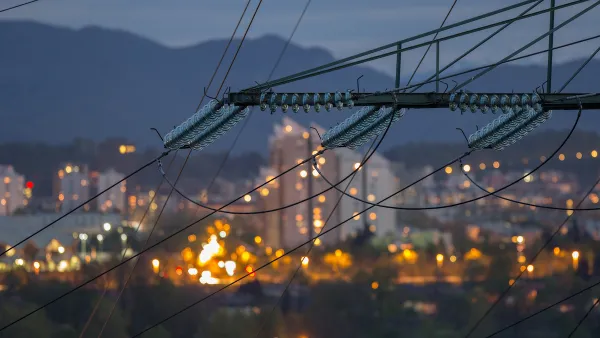Machine learning and AI can transform the way transit agencies operate and make service faster and more comfortable for users.

In a piece for RT Insights, Syed Mansoor Pasha outlines the various ways artificial intelligence and machine learning are transforming public transit and helping transit agencies better understand their riders’ needs and how to provide more efficient service.
According to Pasha, “This technological leap is enabling public transit systems to adapt intelligently to individual preferences and real-time demands, heralding a new era of dynamic and responsive transportation.” In London, Project Luna uses AI to provide transit information to people with hearing impairments, offering digital information in British Sign Language.
Using AI, agencies can perform more accurate passenger counting so they can effectively manage their fleet and staffing. AI can also help detect anomalies in system operations more quickly.
As Pasha points out, “The backbone of these AI technologies in public transit is onboard internet connectivity, which facilitates real-time data transfer and enables seamless communication both within the vehicle and to and from the cloud.” On-board connectivity can reduce the amount of energy needed to process data and essentially turn trains into “rolling data centers.”
FULL STORY: Transforming Public Transit with AI and Machine Learning

National Parks Layoffs Will Cause Communities to Lose Billions
Thousands of essential park workers were laid off this week, just before the busy spring break season.

Retro-silient?: America’s First “Eco-burb,” The Woodlands Turns 50
A master-planned community north of Houston offers lessons on green infrastructure and resilient design, but falls short of its founder’s lofty affordability and walkability goals.

Delivering for America Plan Will Downgrade Mail Service in at Least 49.5 Percent of Zip Codes
Republican and Democrat lawmakers criticize the plan for its disproportionate negative impact on rural communities.

Test News Post 1
This is a summary

Test News Headline 46
Test for the image on the front page.

Balancing Bombs and Butterflies: How the National Guard Protects a Rare Species
The National Guard at Fort Indiantown Gap uses GIS technology and land management strategies to balance military training with conservation efforts, ensuring the survival of the rare eastern regal fritillary butterfly.
Urban Design for Planners 1: Software Tools
This six-course series explores essential urban design concepts using open source software and equips planners with the tools they need to participate fully in the urban design process.
Planning for Universal Design
Learn the tools for implementing Universal Design in planning regulations.
EMC Planning Group, Inc.
Planetizen
Planetizen
Mpact (formerly Rail~Volution)
Great Falls Development Authority, Inc.
HUDs Office of Policy Development and Research
NYU Wagner Graduate School of Public Service





























